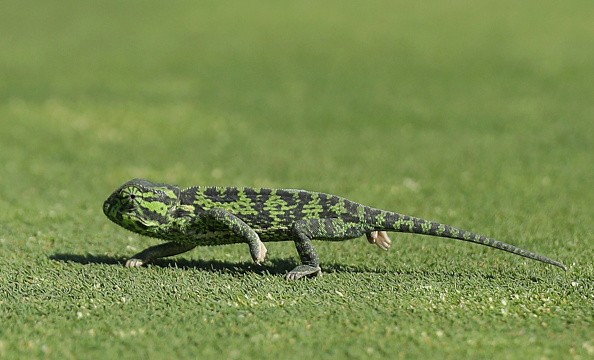Scientists are encouraging urgent conservation efforts after one of the most uncommon species of chameleons in the world was found trying hard to stay alive in small forest patches in Malawi.
A team from the South African National Biodiversity Institute and also the Museums of Malawi found the Chapman's pygmy chameleon in just three locations.

Chapman's Pygmy Chameleon
As per a study that was released on Monday in one of the peer-reviewed academic journals of Cambridge University Press, the Chapman's pygmy chameleon was found in just three places by a team from SANBI - South African National Biodiversity Institute and the Museums of Malawi. This animal was formerly believed to have gone extinct because of deforestation.
In a statement, Professor Krystal Tolley, a lead author of the study and also a herpetologist at SANBI and the University of the Witwatersrand in South Africa said: "The first one we found was in the transition zone on the forest edge, where there are some trees but mostly maize and cassava plants."
Tolley recalled saying that when they found the animal they got goosebumps and just began to jump around. And they were not aware if they would get any more, but immediately they got into the forest many of them were there, but Tolley said she don't know how long that will last.
Dwindling Population
Tolley and her collegues, who in 2016 initially made their findings evaluated that since the 1980s the species' number has reduced by 80 percent.
A DNA analysis examined in the study also propose that the Chapman's pygmy chameleon are existing in fragmented populations, this implies that chameleons in every forest patch are alone within their own abode and is not capable of migrating to breed with other closeby reptiles of their kind
Researchers reveal that this will diminish the genetic diversity of the species after a while and boost their rate of extinction if conservation efforts are delayed.
Tolley noted that the forest loss needs urgent attention before these animals get to a point from which they won't be able to return, immediate conservation action is required, including putting a stop to the destruction of forest and the recovery of habitat to improve connectivity.

Features of Pygmy Chameleon
In 1992, this animal was initially described, the Chapman's pygmy chameleon develop only to about 5.5 centimeter in length - or a little more than 2 inches.
As per Tolley, the Chapman's pygmy chameleon are little, gentle creatures while other species of chameleons can possibly be hysterical, hissing, and biting.
She said: "Chapman's in particular are one of the smallest and don't have a prehensile tail like most chameleons, perhaps because they aren't particularly arboreal but walk about on the forest floor in the leaf litter, crawling up into low bushes at night to sleep. They blend right into the leaf litter and perfectly pattern match the dead leaves."
Related Article : Miniature Chameleon, Believed to be World's Smallest Reptile, Discovered in Madagascar!
For more news, updates about Chapman's pygmy chameleon and similar topics don't forget to follow Nature World News!
© 2025 NatureWorldNews.com All rights reserved. Do not reproduce without permission.





